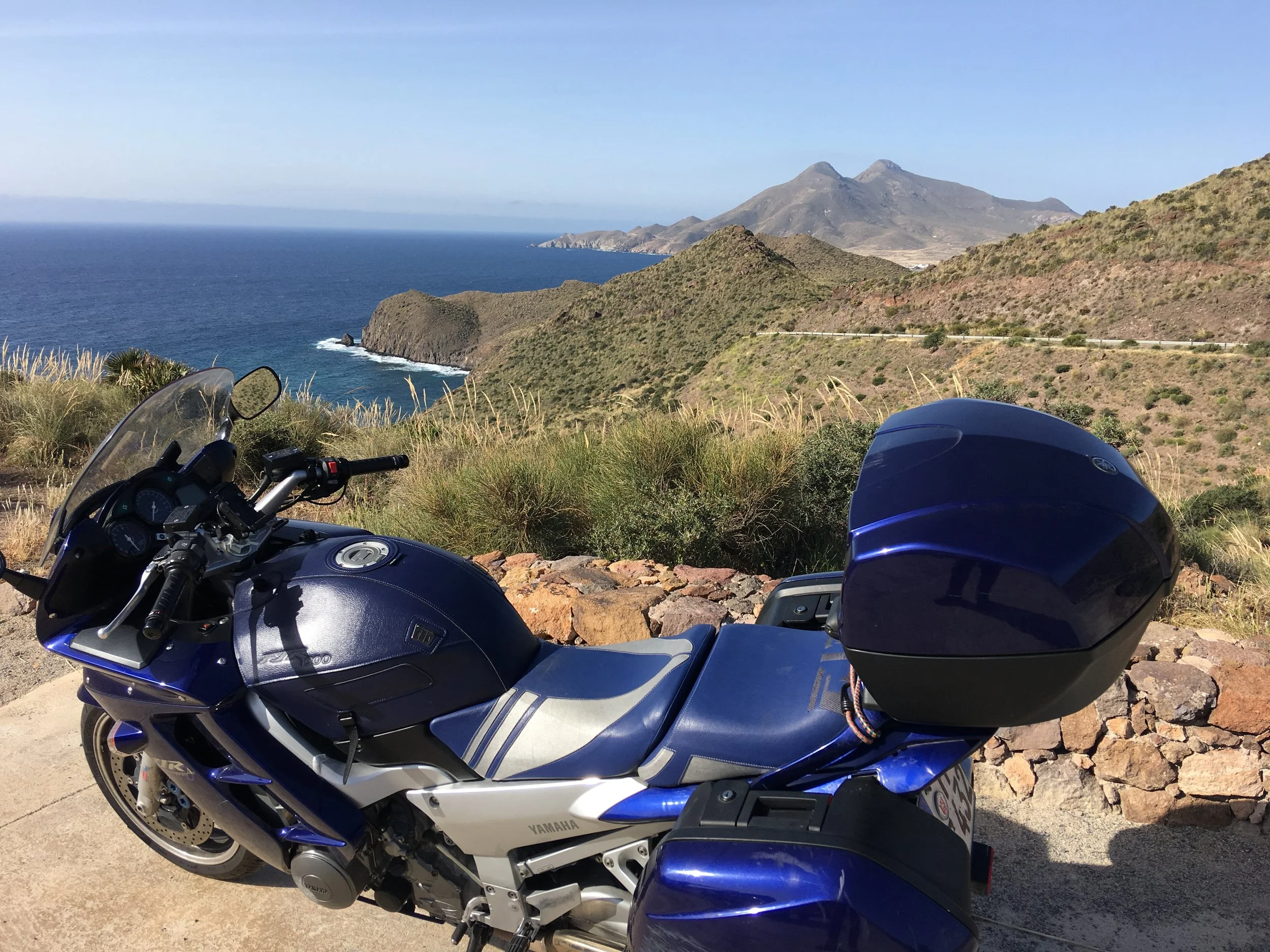Spanish Motorcycle Diaries - Day 5. Granada via Ronda and Tarifa to Conil de la Frontera. (May 2017)
The Alhambra is not only the most magnificent remaining historical monument of the Al-Andalus period, the 700-year reign of the Moors in southern Spain, but is also a symbol of the ‘reconqusita’ and the beginning of Spain’s glorious period. Charles V, the son of the Reyes Catolicos, razed some of the sultan’s building to create space for a beautiful palace in Italian Renaissance style, marrying the monuments of the conquered and conqueror.
1492 AD. Most of us learned that date in school as the year that Italian seafarer Christoph Columbus, sailing west in search of a western passage for India, accidentally discovered America. A native of Genoa, he could not convince his fellow Italians to fund him, and thus sought the favour of the Spanish king and queen, who finally granted him three small ships and a motley crew; the rest is history, as they say. Or is it?
As those brave enough to read beyond the first paragraphs of this travel blog have already learned at their own peril, I failed my vocation as a history buff and am using this trifle excuse of a motorcycle trip to make up for it. So it hit me right between the eyes when I realized on our first Andalusian trip in January (to glorious Seville amongst others, which for some 200 years had the monopoly on all trade with the Latin American colonies, growing fat and beautiful on all that bounty), that 1492 was actually a watershed year for at least three reasons, which the last 36 hours in Granada have only shone more light on:
1. The discovery of America, duly noted, and the beginning of modern history. Spain went on to successfully conquer most of Latin America, including the brutal suppression of the Aztecs in Mexico by the brilliant and ruthless Cortes (1521), and the subjugation of the (silver-) rich culture of the Incas in Peru by Pizzaro (1572), thus setting itself up as one of the three main global powers (next to France and Britain) to dominate the next three centuries of European history and global affairs.
2. The end of the ‘reconquista’, i.e. the expulsion of the Moors from Spain by the Reyes Catolicos, culminating a 700+ year drive to reconquer Hispania from the ‘infidels’ and unite Spain as a nation – completed on January 2nd, 1492, when the last remaining ruler of a Moorish enclave in Spain, Boabdil the Sultan of Granada, agreed to withdraw and hand over the town and the magnificent fortified palace castle of the Alhambra, reckoned to be one the most impressive historic monuments worldwide, to Isabel of Castile and Ferdinand of Aragon. The conquest was celebrated all over Europe and the pope held a special mass for the liberators.
3. The beginning of a brutal period of religious intolerance and domination by those same Reyes Catolicos, including the immediate expulsion of some 200,000 Sephardic Jews from Spain, the setting up of the Spanish Inquisition, and the forceful conversion of some 600,000 moors to Christianity – followed in the next century by their expulsion.
A number of questions arose when I started understanding the historic context and causal relationship between these various events:
A. Why did the newfound united Spain find it necessary to affirm its unity and creed not through positive actions, but through pogroms, exclusion, intolerance, and subjugation of people of different creeds and customs, often in the name of Christianity? (The expulsion of the Jews, and subsequent expulsion of the Moors, had huge deleterious effects on Spain’s human capital base. Such follies were by no means restricted to historic Spain. Post-independence Kenya and Uganda, for example, also found it expedient to expel most of their Asian/Indian minorities, which had constituted major commercial and cultural components of their respective countries. -- Notably, Spain decreed in 2013 that all descendants of the Sephardic Jews expelled over 500 years ago can apply for Spanish citizenship; a late but welcome acknowledgment of that historic mistake.)
B. How much was Spain’s long-delayed development in Europe to be blamed on the intolerance, the lack of intellectual openness, and the subjugation of public life to conformity, tradition, and autocracy? (The standard historian’s view of Spain is that the Inquisition is directly responsible for not allowing the ideas of the Enlightenment to spread in Spain, keeping the country as a largely rural, ecclesiastical, class-dominated, traditional and backward country until the 1930s, when the Republic sought to create a modern Spain but was crushed by Franco’s coup d’etat and civil war, which arrested many modernizing movements in Spain until his death in 1975, and Spain’s joining of the EU in 1986. All this after Spain’s golden epoch, its siglo de oro, in the 16th and 17th century (approx. 1492-1659), based on the massive wealth extracted from its Latin American colonies, held the promise of making Spain permanently one of the leading European powers (that complex of now being a minor European player is palpable in all contemporary political comments in Spain).)
[For further reading, I suggest English historians, as a lot of the Spanish historiography still struggles to be impartial, given how recent both the Civil War and the Franco dictatorship were. A good start is Raymond Starr’s: Spain. A History. The pre-eminent modern-day English language historian of Spain is LSE’s Professor of Spanish History, Paul Preston, who has published both the defining biography of the Caudillo Franco (and of his socialist counterpart Santiago Carrillo), as well as the difficult but necessary The Spanish Holocaust, a very detailed and authoritative analysis of the systematic extermination during the civil war that, to this day, has not been fully openly discussed in Spain; the very successful transicion from the Franco regime to democratic Spain, which was not pre-ordained and needed to be navigated carefully at the time, was bought with the widely-accepted pacto de olvido, the pact of forgetting.]














